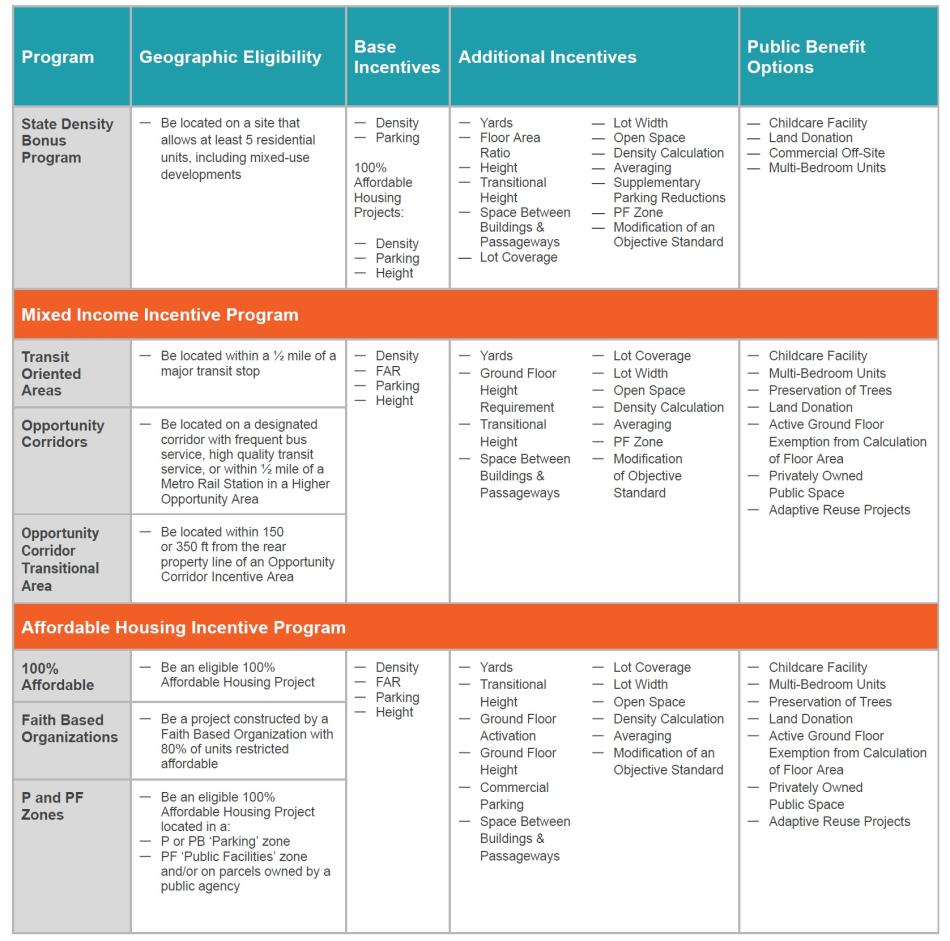Two years ago, state regulators signed off on the 2021-2029 Los Angeles Housing Element, creating a new framework for how city officials will accommodate 255,000 new homes in the coming years. Now, the Planning Department is moving forward with zone changes and new policies aimed at realizing that goal.
Earlier this month, the Planning Department announced the release of the Citywide Housing Incentive Program ("CHIP") Ordinance, which includes amendments to the city's density bonus program to account for recent changes to state law, as well as two new programs intended to promote housing production along commercial corridors, high opportunity neighborhoods, and in areas in close proximity to transit.
The first of those new initiatives is a mixed-income incentive program - or MIIP - which codifies certain elements of the Transit Oriented Communities (TOC) incentive program, while also creating new development bonuses for sites located in proximity to high-opportunity areas. Likewise, the program includes incentives with the stated goal of fostering the construction of "missing-middle" developments that could provide a transition between lower-scale residential neighborhoods and higher-density commercial corridors. It also incorporates opportunities for development bonuses based on the inclusion of community amenities besides affordable housing, including desirable uses like childcare facilities or multi-bedroom units.
The CHIP ordinance also includes a new affordable housing incentive program, which offers unique incentives for fully income-restricted housing projects. The program also expands the type of sites eligible for affordable housing developments to include properties zoned for public facilities and parking, as well as those owned by public agencies and religious institutions.
Notably, both the affordable housing and mixed income incentive programs will not apply to properties zoned for single-family housing - although the Planning Department had initially proposed to include such properties. That change, made following backlash from homeowners groups, has been decried by analysts with the UCLA Lewis Center Housing Initiative in a Los Angeles Times op-ed.
Accompanying the release of the CHIP ordinance is a revised version of the citywide adaptive reuse ordinance, which was first rolled out in May 2023, and would allow by-right conversions to housing for most buildings which are at least 15 years old.
 The San Fernando Building in Downtown Los Angeles, which was converted to housing through the adaptive reuse ordinanceWikimedia Commons
The San Fernando Building in Downtown Los Angeles, which was converted to housing through the adaptive reuse ordinanceWikimedia Commons
The citywide policy would either maintain or expand upon many elements of the existing ordinance, which has brought about the construction of more than 12,000 residential units in Downtown Los Angeles in the past 25 years. Among the changes are an exemption of adaptive reuse projects from any zoning requirements on minimum unit size, as well as new incentives which could permit rooftop additions, the off-site redistribution of existing floor area, and waivers from development standards for projects that include affordable housing.
Two other ordinances included with the March release include those implementing state requirements for categorizing housing element opportunity sites, as well as a resident protections ordinance which would establish conditions that must be met for any project requiring the demolition of existing, protected housing units that are either subject to income restrictions or the city rent stabilization ordinance. Those include rights to remain and return for occupants of protected units, as well as rights to relocation benefits. Additionally, the proposed ordinance extends the covenant terms for restricted affordable units within mixed-income developments from 55 years to 99 years, and establishes new requirements regarding the marketing of affordable units to prospective renters.
Follow us on social media:
Twitter / Facebook / LinkedIn / Threads / Instagram







